
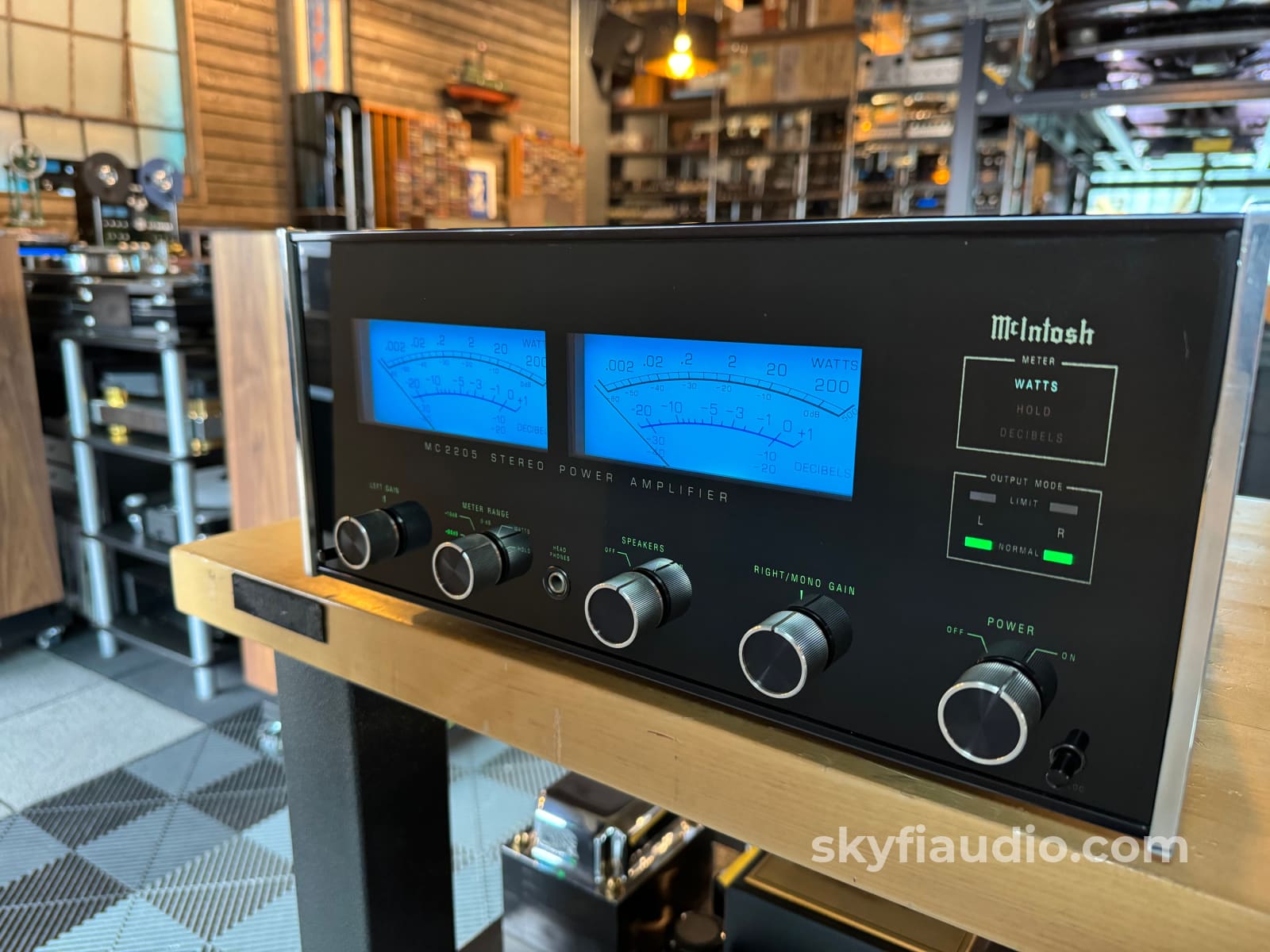
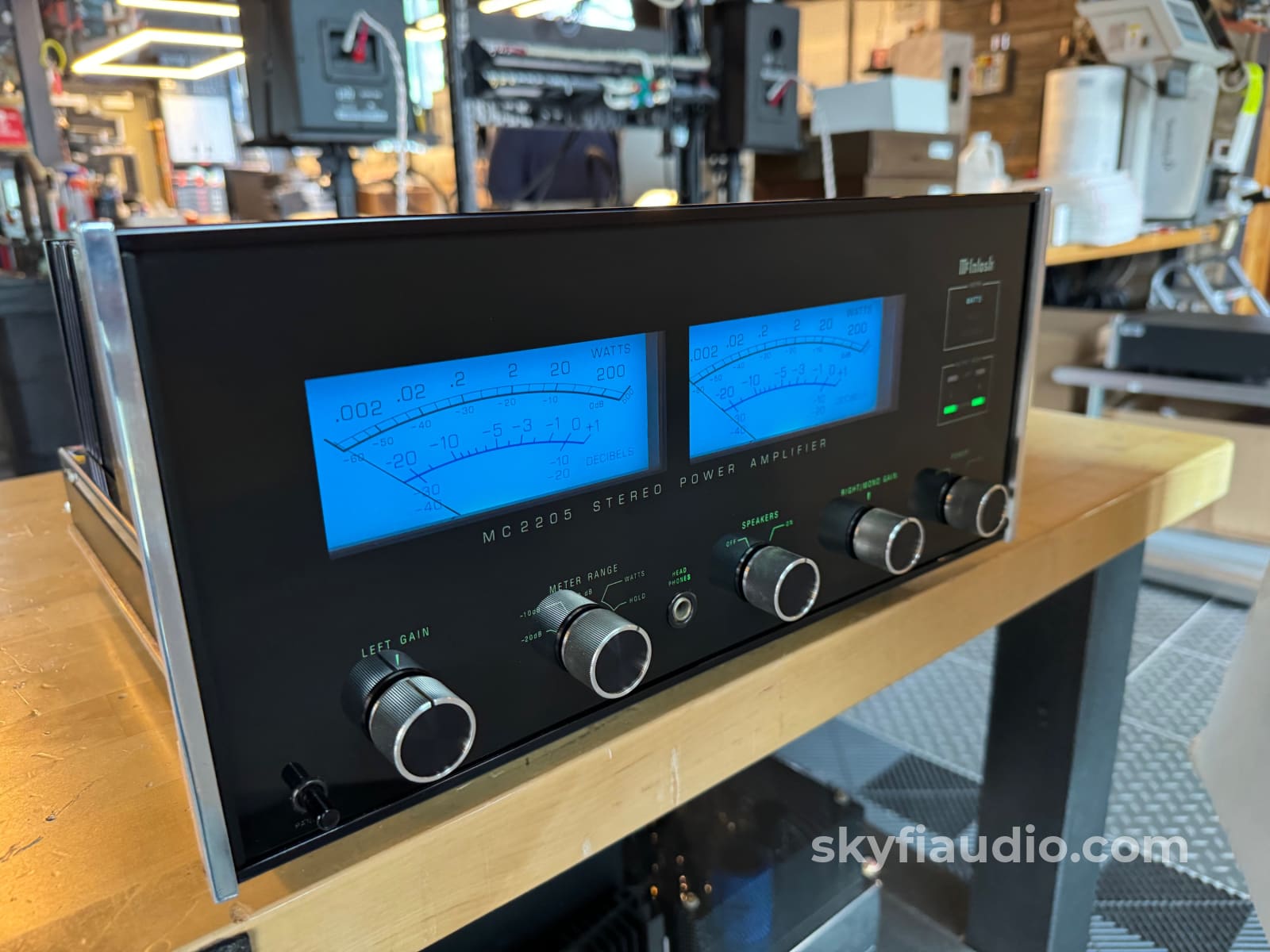
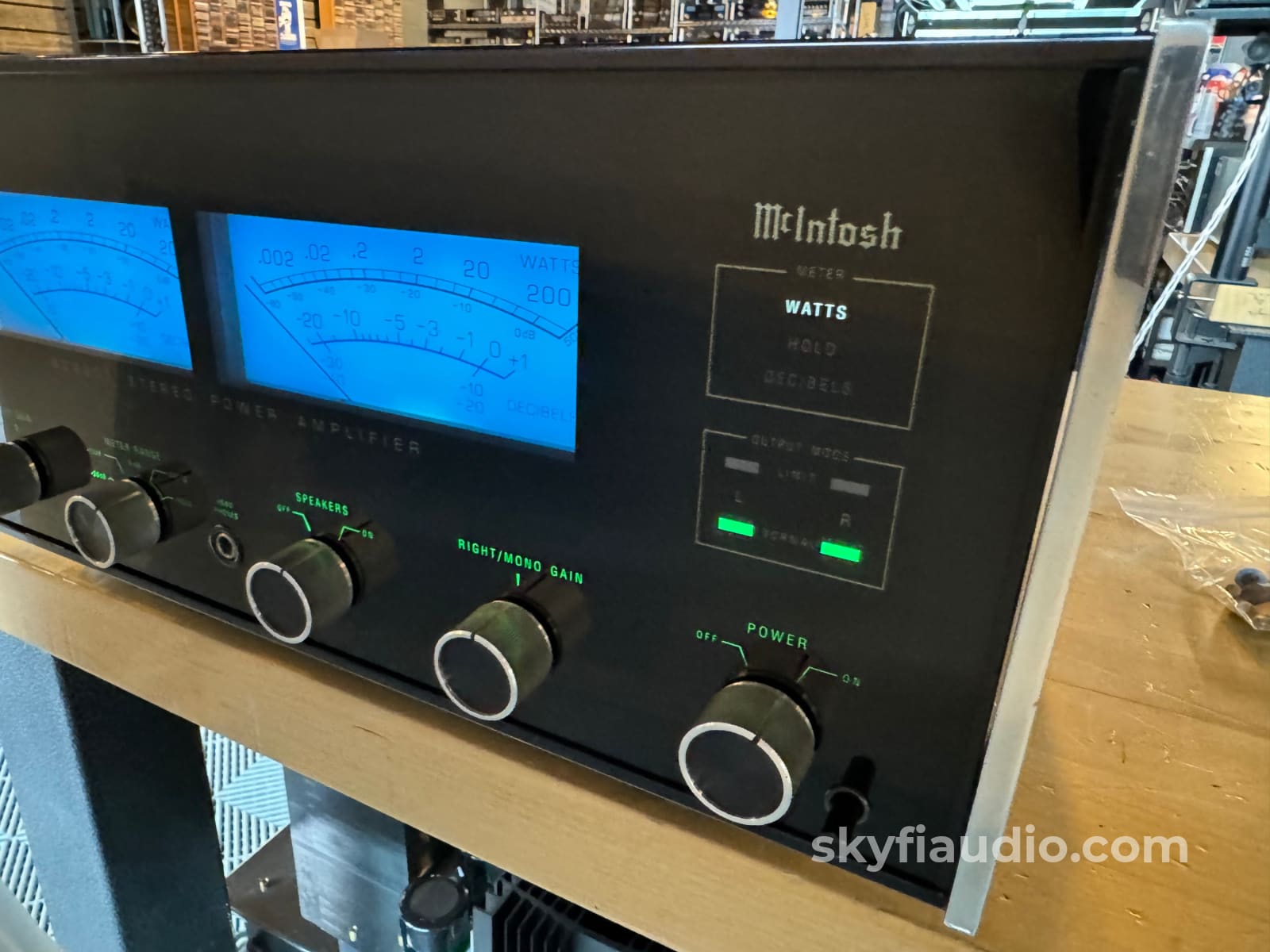

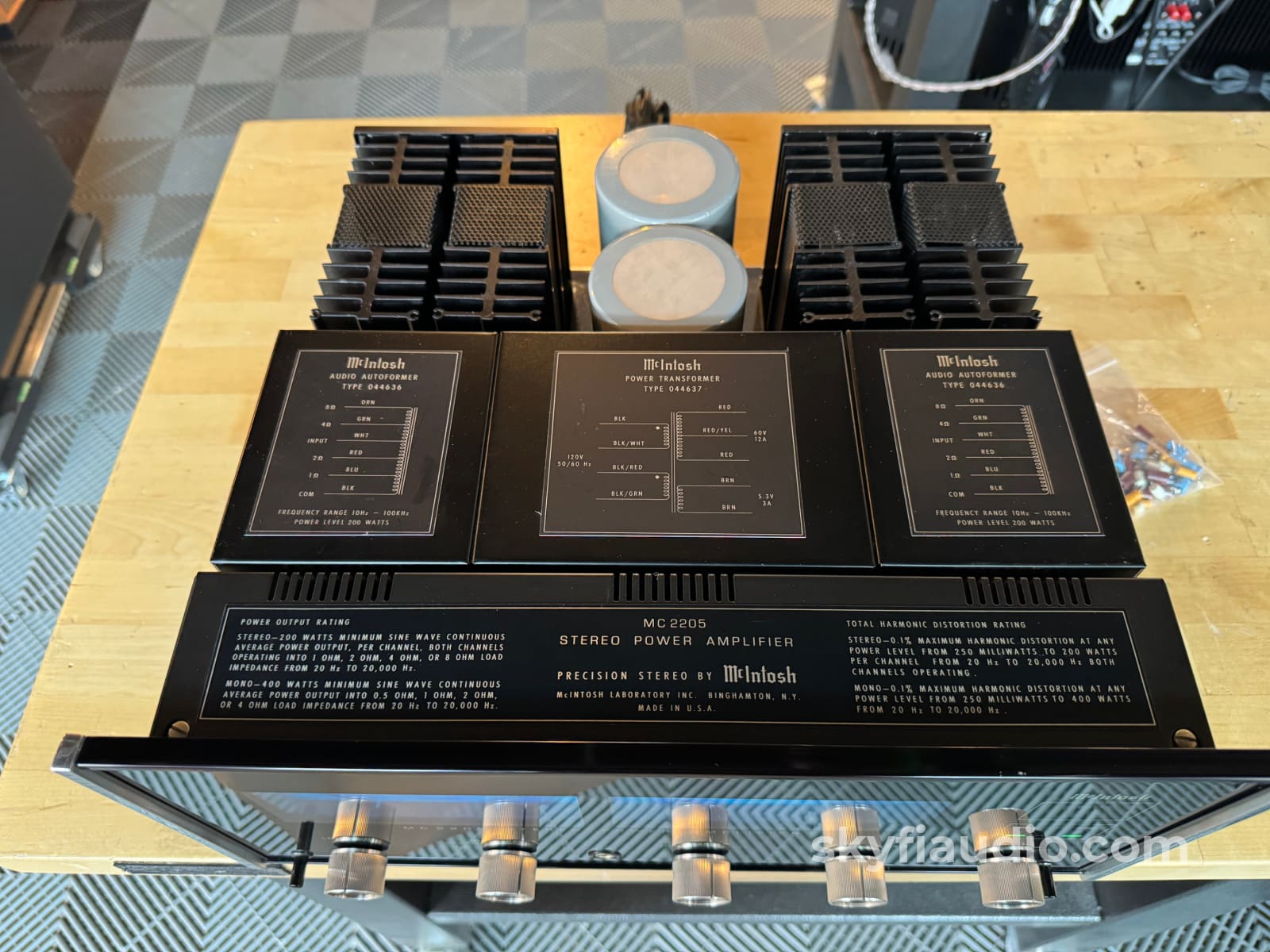
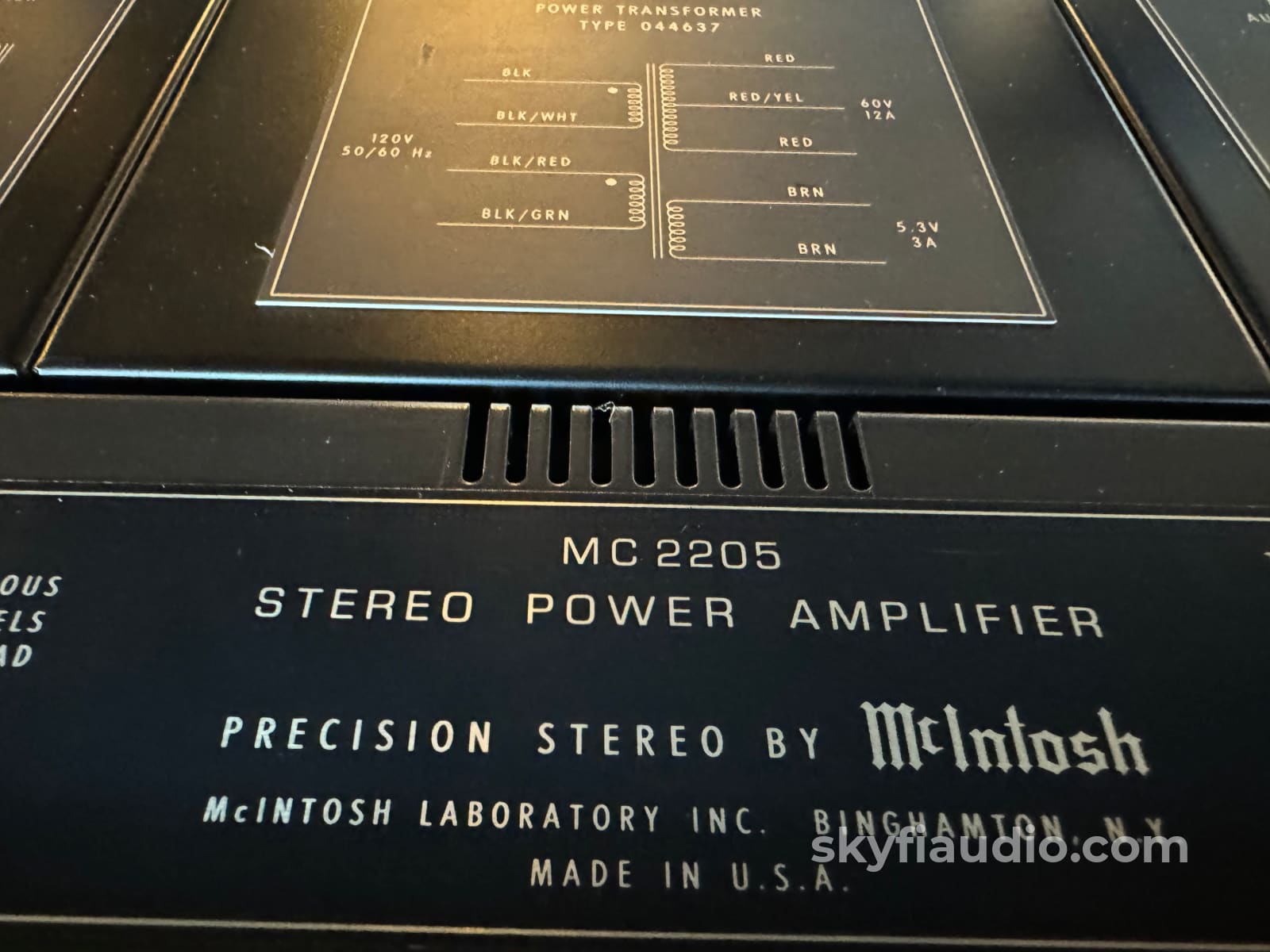
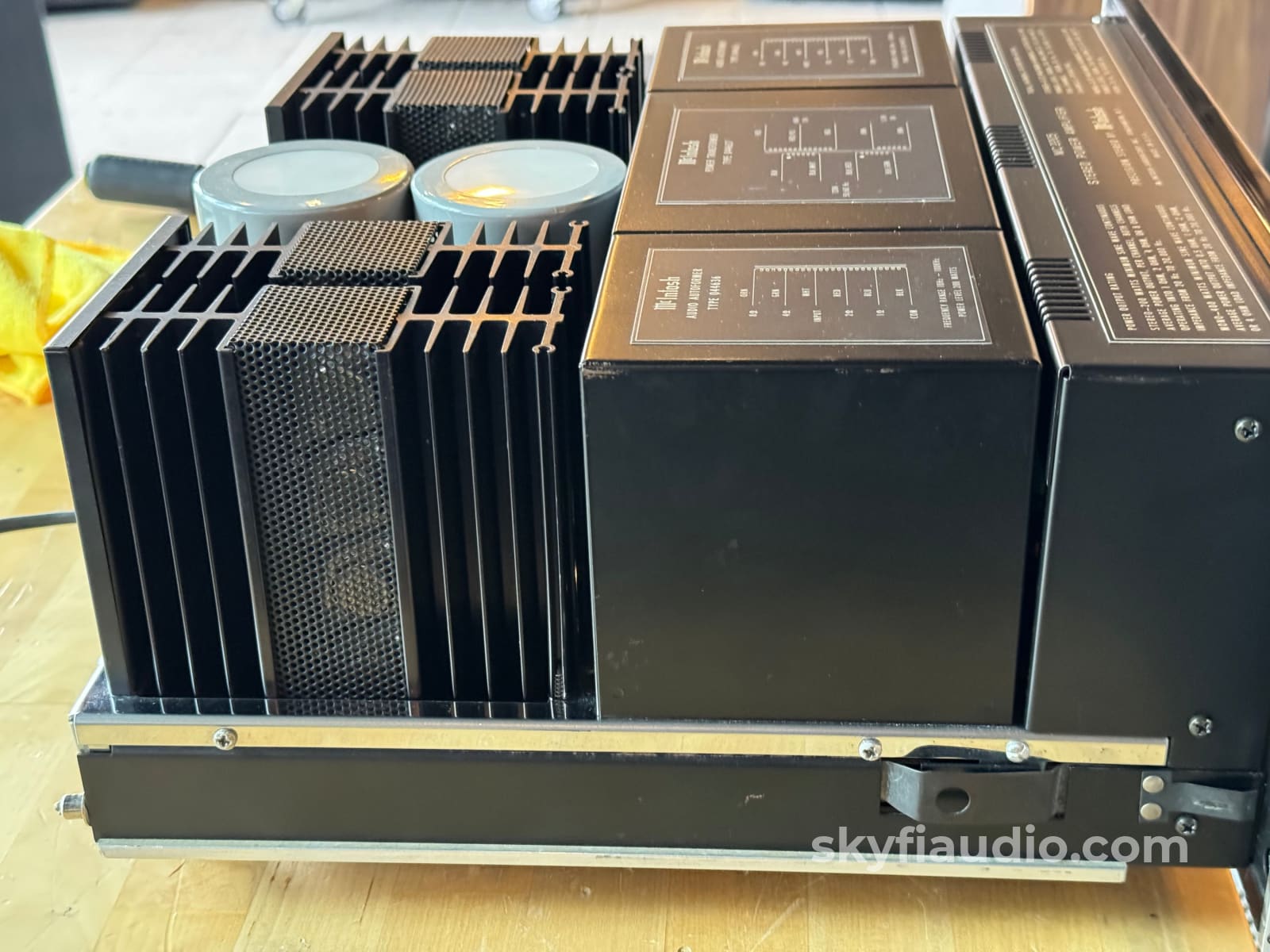
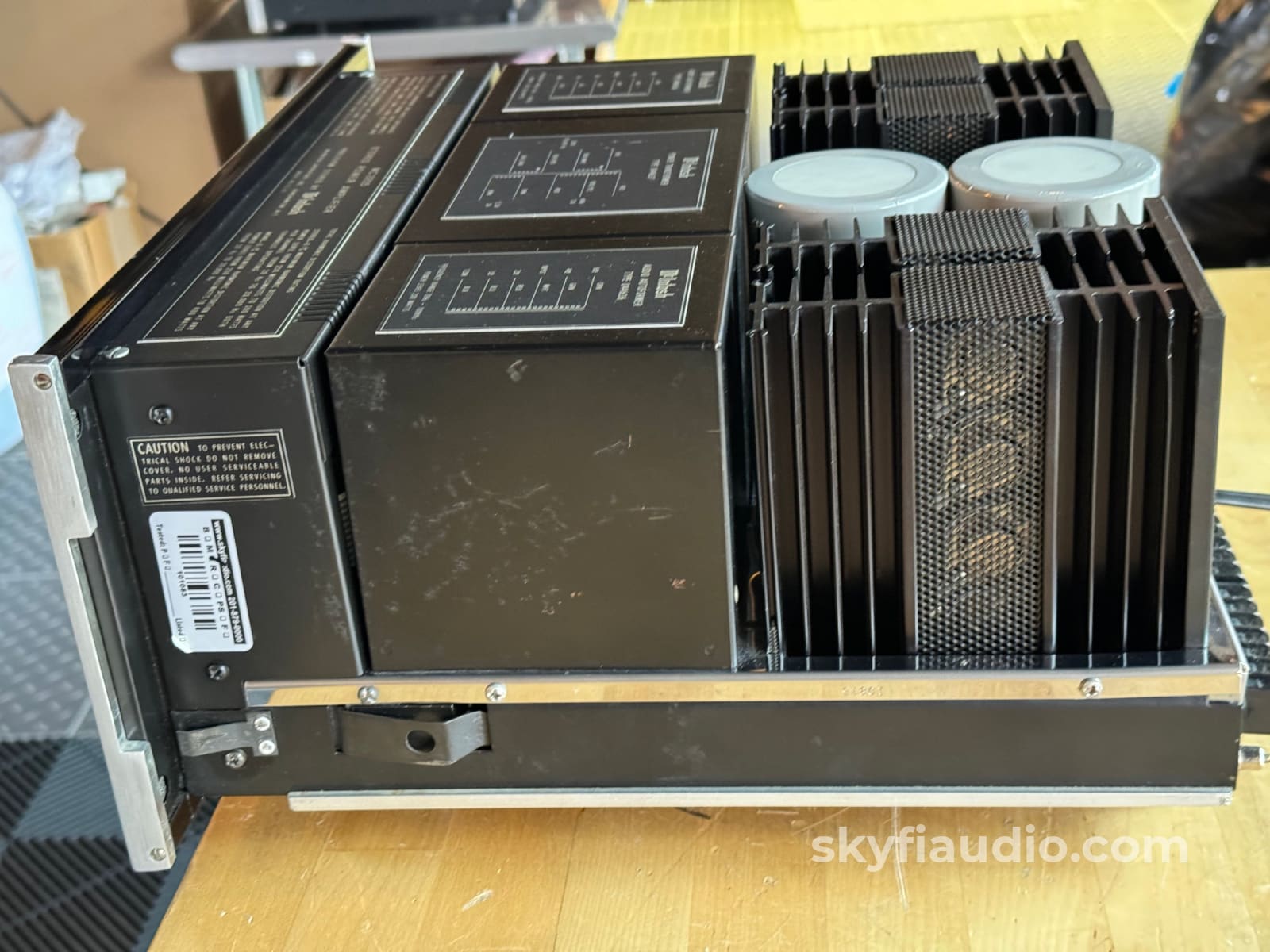
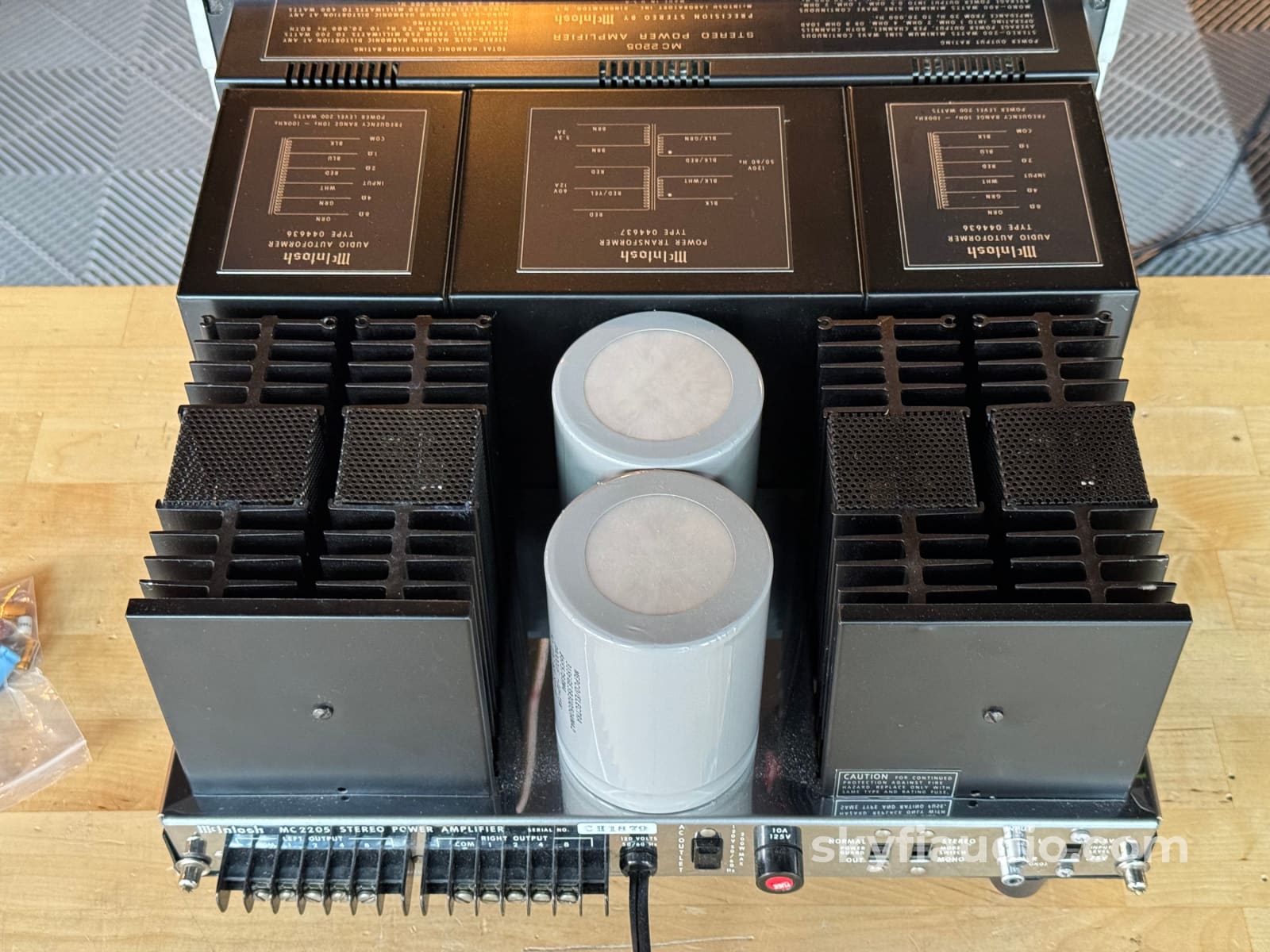

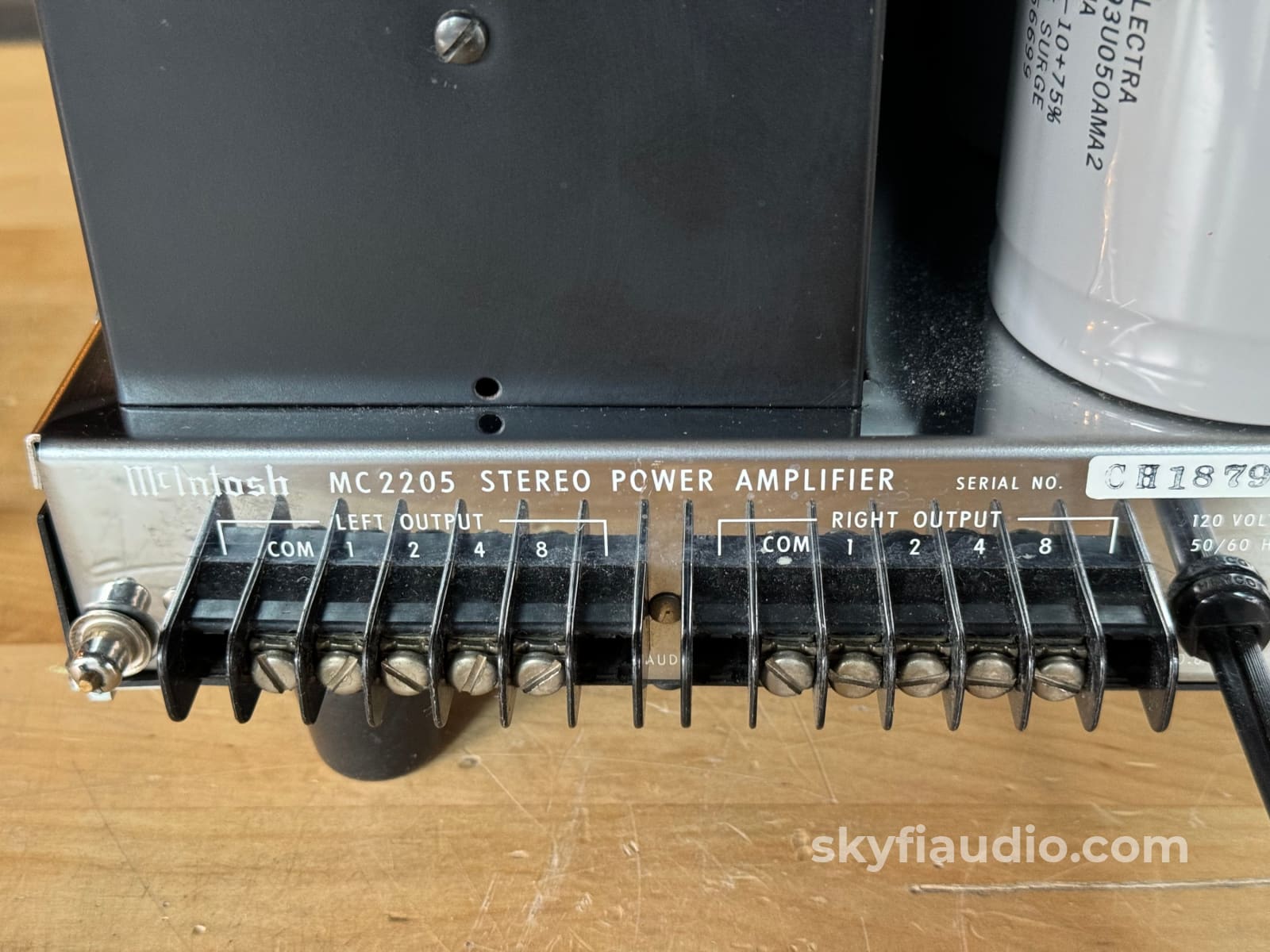
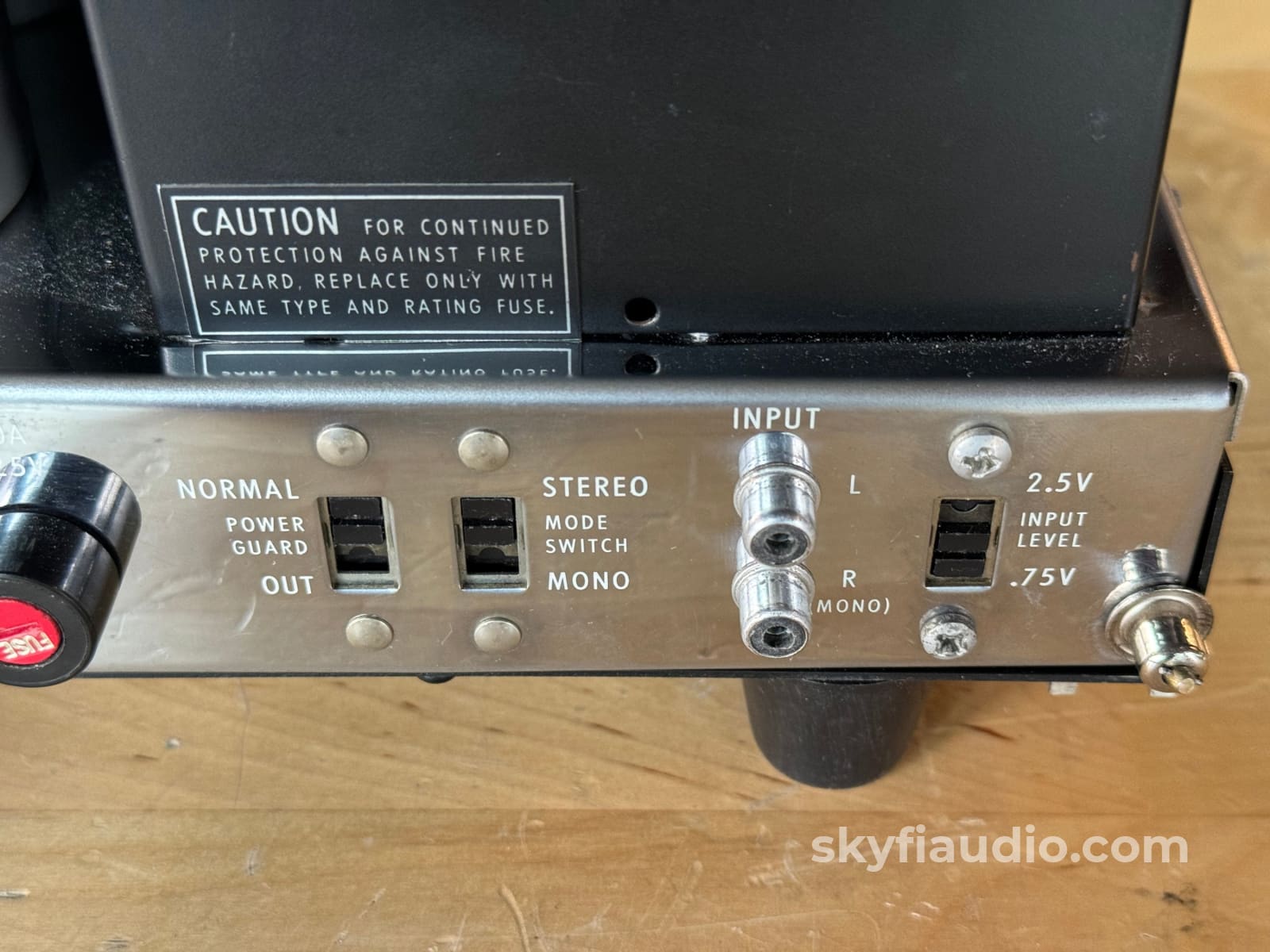
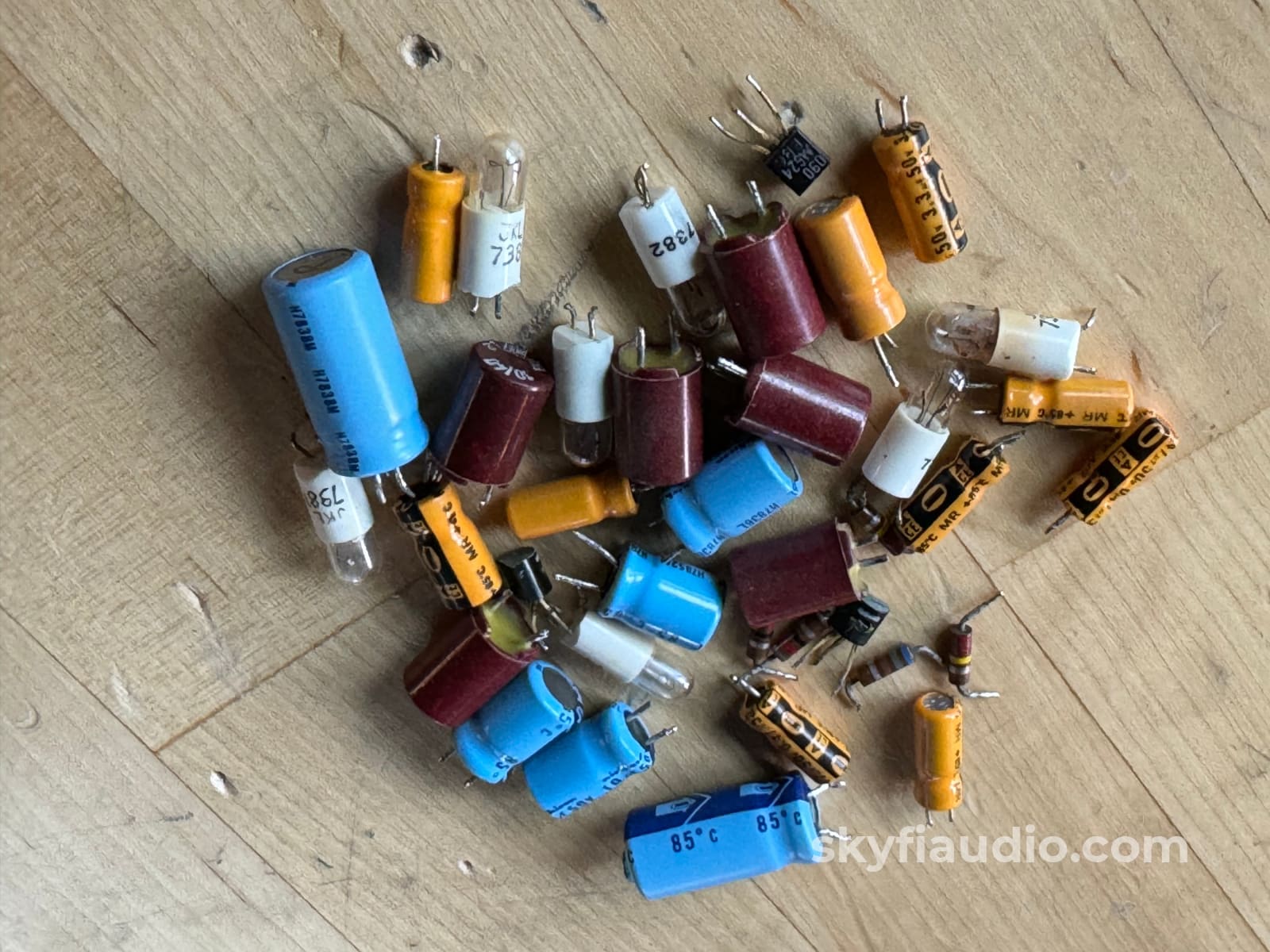
McIntosh MC2205 Solid State Vintage Amplifier - SkyFi Restored
Free Shipping on Most Electronics - Excludes Speakers and Items Requiring Freight - Contiguous U.S. Only
Pickup currently unavailable at SkyFi 479

McIntosh MC2205 Solid State Vintage Amplifier - SkyFi Restored
SkyFi 479
479 South Broad Street
Glen Rock NJ 07452
United States
General:
200W of American Muscle.
One of McIntosh’s most popular amplifiers from the 1970’s. Built like a tank and sure to last 100+ years.
Still relevant to today’s 200W amplifiers, and a solid reliable performer with a wonderful typical sweet McIntosh sound.
This model is one of our best sellers and they don't tend to hang around very long. We even upgraded to LED lighting to give it a fresher, more modern look, as most folks are disappointed with the original dim lighting on vintage pieces. We left the bezel off in case the new owner wants a more modern look. We can attach it if you prefer, just let us know after purchase.
Best of all it will ship in a brand new McIntosh double carton, the only way to ensure safe transport. Never ship one of these in anything other than that as it will result in disappointment.
Cosmetic Notes:
This amplifier has a few small cosmetic blemishes. The left channel heat sinks are slightly tilted towards the center of the unit. The side of the right channel autoformer shows a bit of corrosion. There is a small vertical mark in the glass to the right of the Watts, Hold, dB Display.
Technical Notes:
To be sure that this piece would perform long term we opted for an extensive overhaul.
Both output modules were rebuilt with current production On Semi TO-3 devices as well as new emitter resistors, all sourced from McIntosh.
We also replaced all of the electrolytic caps on the driver boards, power supply, and meter board for good measure. Select known trouble maker silicon devices were also changed as needed.
We finished off by converting the meter and lettering illumination to warm white LED and replaced all of the aging indicator lamps with fresh incandescent parts.
The amplifier's bias and metering circuits were adjusted to service manual specifications. This amp passed our bench testing process with excellent results for both channel balance and output power.
Brand Background:
McIntosh Laboratory is an American manufacturer of handcrafted high-end audio equipment based in Binghamton, New York. The company was founded in 1949 by Frank McIntosh. The company designs and produces audio amplifiers, stereo tuners and other consumer electronics products.
Ownership:
Unknown
General Sound:
Smooth, uncolored, undistorted natural and clean
Cosmetic Condition:
8/10. See our detailed rating description here.
Working Condition:
Working perfectly and tested in our lab and listening room.
Included:
Unit, manual, and power cord.
Packing:
Original Manufacturers Packing
Specs:
ELECTRICAL: 200w/ch. (400w mono). Response 20-20kHz (+0 -0.25dB). Distortion 0.1%. Noise and hum -95dB. Output impedance 1, 2, 4 and 8 ohms. (0.5, 1, 2, and 4 ohms in mono). Damping factor 16 or greater. Input impedance 100k. Input sensitivity 0.75v or 2.5v. Headphone impedance: low. Sentry Monitor. Power Guard.
FRONT PANEL: Glass panel with black & gold escutcheon. Illuminated. Power level meters (linear watts or dB). Gain controls. Meter range sw: -20, -10, 0, watts and hold. Output mode lamps: normal or limit. Meter function lamps: watts, hold or decibels. Speaker sw: on or off. Power sw: on or off. Headphone jack.
BACK PANEL: Output barrier strips. Audio inputs. AC outlet. Input level sw: 2.5v or .75v. Mode sw: stereo or mono. Fuse. Panloc mounting.
Sold from: 1975-1979
Dimensions:
7-1/8"H, 16-3/16"W and 14-1/2"D.
Weight:
85 lbs.
Approximate Age:
1978
Link to Manual:
Click Here
Recommended Cables:
Kimber Kable - RCA Interconnects - Better
Testing Process:
We start with a visual inspection of all internal components to make sure that there are no signs of heat stress or damage. Capacitors are checked for telltale signs of predictive failure including bulging, shrunken wrappers, or physical leakage. We also inspect the PCBs for discoloration from resistors or transistors that may have been running hot. On vintage units we often spot check select capacitors for value and ESR.
If the amplifier passes visual inspection, we move on to a controlled power on sequence using a Sencore safety analyzer to monitor current draw in real time. Once the amplifier is determined to be safe to operate, we connect it to full AC mains for function and power testing. We connect the speaker outputs of the amplifier to a Sencore PA81 Power Analyzer which acts as a dummy load, DC offset monitor, and oscilloscope interface. We start with a low level 1 KHz test signal at the amplifier’s input and slowly increase its amplitude while monitoring the output on an oscilloscope for signs of noise, clipping, distortion, or improper channel balance. We continue increasing the signal level until the amplifier reaches clipping.
At this point we take an output power measurement and compare it to the spec sheet of the amplifier to verify proper performance. If the device under test has both balanced and single ended inputs they are both tested at this time. We finish off the bench evaluation with a 1 KHz square wave check and a 20 Hz to 20 KHz sine sweep to assess the amplifier’s frequency response characteristics. This battery of tests will usually reveal if the amplifier has any issues that need further attention.
Before the device leaves the bench, we perform a listening test with actual music using a variety of preferred test tracks. Our benches are outfitted with familiar monitor speakers which help us identify inconsistencies that will not always show up on our test gear. The main things that we are listening for are hum or noise with no signal present, proper center image, clicks, pops, or any other obvious undesirable audio characteristics.
If the unit passes all of these tests it is moved to our long term testing rig where we simulate real word operating conditions for 6-8 hours. This allows us to monitor the unit for signs of thermal runaway or intermittent issues that only crop up when the unit has fully come up to temperature.
Choose options
